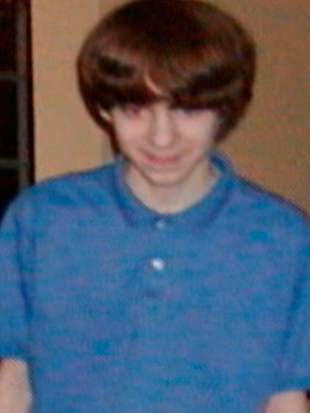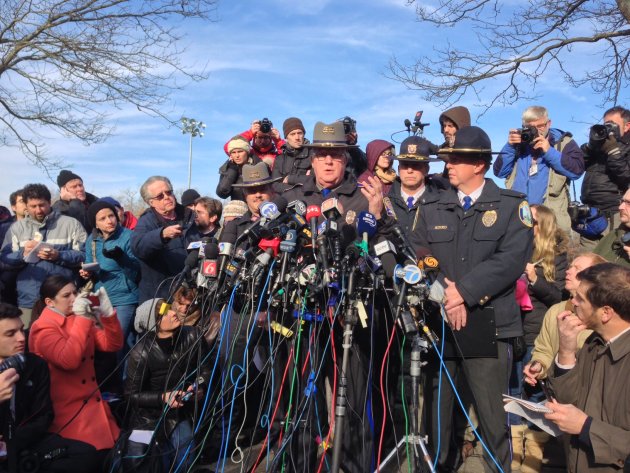TOKYO (AP) — Japan's conservative Liberal Democratic Party returned to power in a landslide election victory Sunday after three years in opposition, according to unofficial results, signaling a rightward shift in the government that could further heighten tensions with China, a key economic partner as well as rival.
The victory means that the hawkish former Prime Minister Shinzo Abe will get a second chance to lead the nation after a one-year stint in 2006-2007. He would be Japan's seventh prime minister in six-and-a-half years.
In the first election since the March 11, 2011, earthquake, tsunami and nuclear disasters, atomic energy ended up not being a major election issue even though polls show about 80 percent of Japanese want to phase out nuclear power.
Public broadcaster NHK's tally showed that the LDP, which ruled Japan for most of the post-World War II era until it was dumped in 2009, won 294 seats in the 480-seat lower house of parliament. Official results were not expected until Monday morning.
LDP, the most pro-nuclear power party, had 118 seats before the election. A new, staunchly anti-nuclear power party won just nine seats, according to NHK.
In the end, economic concerns won out, said Kazuhisa Kawakami, a political science professor at Meiji Gakuin University.
"We need to prioritize the economy, especially since we are an island nation," he said. "We're not like Germany. We can't just get energy from other countries in a pinch."
The results were a sharp rebuke for Prime Minister Yoshihiko Noda's ruling Democratic Party of Japan, reflecting widespread unhappiness with its failure to keep campaign promises and get the stagnant economy going during its three years in power.
The DPJ won in a landslide three years ago amid high hopes for change, but won only 57 seats, compared to 230 seats before Sunday's election, according to the NHK tally. Among the casualties were eight Cabinet ministers, the most to lose their seats in an election since World War II, the Kyodo News agency reported.
With Japan stuck in a two-decade slump and receding behind China as the region's most important economic player, voters appeared ready to turn back to the LDP.
A serious-looking Abe characterized the win as more of a protest vote against the DPJ than a strong endorsement of his party.
"I think the results do not mean we have regained the public's trust 100 percent. Rather, they reflect 'no votes' to the DPJ's politics that stalled everything the past three years," he told NHK. "Now we are facing the test of how we can live up to the public's expectations, and we have to answer that question."
Japanese TV stations compile their own tallies by adding all local government interim vote counts and are generally highly accurate. The central government does not provide a grand total until all the numbers are official the next day.
Calling the results "severe," Noda told a late-night news conference he was stepping down as party chief to take responsibility for the defeat.
"I apologize deeply for our failure to achieve results," he said. "It was the voters' judgment to our failure to live up to their expectations."
The LDP will stick with its long-time partner New Komeito, backed by a large Buddhist organization, to form a coalition government, party officials said. Together, they now control 325 seats, securing a two-thirds majority that would make it easier for the government to pass legislation.
Noda said a special parliamentary session would be held before year-end to pick a new prime minister. As leader of the biggest party in the lower house, Abe will almost certainly assume that post.
The new government will need to quickly deliver results ahead of upper house elections in the summer. To revive Japan's struggling economy, Abe will likely push for increased public works spending and lobby for stronger moves by the central bank to break Japan out of its deflationary trap.
"The economy has been in dire straits these past three years, and it must be the top priority," Abe said in a televised interview. He has repeatedly said in the past he will protect Japan's "territory and beautiful seas" amid a territorial dispute with China over some uninhabited islands in the East China Sea that Japan calls Senkaku and China calls Daioyu.
"We must strengthen our alliance with the U.S. and also improve relations with China, with a strong determination that is no change in the fact the Senkaku islands are our territory," Abe said in the interview.
President Barack Obama congratulated Abe in a statement issued Sunday, declaring that the U.S.-Japanese alliance "serves as the cornerstone of peace and prosperity in the Asia-Pacific."
Obama said he looked forward to working close with the new Japanese government "on a range of important bilateral, regional and global issues."
Some Japanese voters also said they supported the LDP's vows to build a stronger, more assertive country to answer increasing pressure from China and threats of North Korean rocket launches.
"I feel like the LDP will protect Japan and restore some national pride," Momoko Mihara, 31, said after voting in the western Tokyo suburb of Fuchu. "I hope Mr. Abe will stand tall."
A dizzying array of more than 12 parties, including several news ones, contested, some with vague policy goals.
One of the new parties, the right-leaning, populist Japan Restoration Party, won 54 seats, NHK said. The party, led by the bombastic nationalist ex-Tokyo Gov. Shintaro Ishihara and lawyer-turned Osaka Mayor Toru Hashimoto — both of whom are polarizing figures with forceful leadership styles — could become a future coalition partner for the LDP, analysts said.
Ishihara was the one who stirred up the latest dispute with China over the islands when he proposed that the Tokyo government buy them from their private Japanese owners and develop them.
The anti-nuclear Tomorrow Party — formed just three weeks ago —captured just nine seats, according to NHK. Party head Yukiko Kada said she was very disappointed to see LDP, the original promoter of Japan's nuclear energy policy making a big comeback.
Abe, 58, is considered one of the more conservative figures in the increasingly conservative LDP.
During his previous tenure as prime minister, he pursued a nationalistic agenda pressing for more patriotic education and upgrading the defense agency to ministry status.
It remains to be seen how he will behave this time around, though he is talking tough toward China, and the LDP platform calls developing fisheries and setting up a permanent outpost in the Senkaku/Daioyu islands, a move that would infuriate Beijing.
During his time as leader, Abe also insisted there was no proof Japan's military had coerced Chinese, Korean and other women into prostitution in military brothels during Japan's wartime aggression in Asia. He later apologized but lately has suggested that a landmark 1993 apology by then-Chief Cabinet Secretary for sex slavery needs revising.
He has said he regrets not visiting the Yasukuni Shrine, which enshrines Japan's war dead, including top war criminals, during his term as prime minister. China and South Korea oppose such visits, saying they reflect Japan's reluctance to fully atone for its wartime atrocities.
The LDP wants to revise Japan's pacifist constitution to strengthen its Self-Defense Forces and, breaching a postwar taboo, designate them as a "military." It also proposes increasing Japan's defense budget and allowing Japanese troops to engage in "collective self-defense" operations with allies that are not directly related to Japan's own defense.
It's not clear, however, how strongly the LDP will push such proposals, which have been kicked around by conservatives for decades but made no headway in parliament because of limited support among a group of right-wing advocates. LDP could push them harder this time as it and coalition partner now controlling two-thirds in the lower house, though they lack control of the other chamber.
__
AP writers Elaine Kurtenbach, Mari Yamaguchi and Eric Talmadge contributed to this report.




